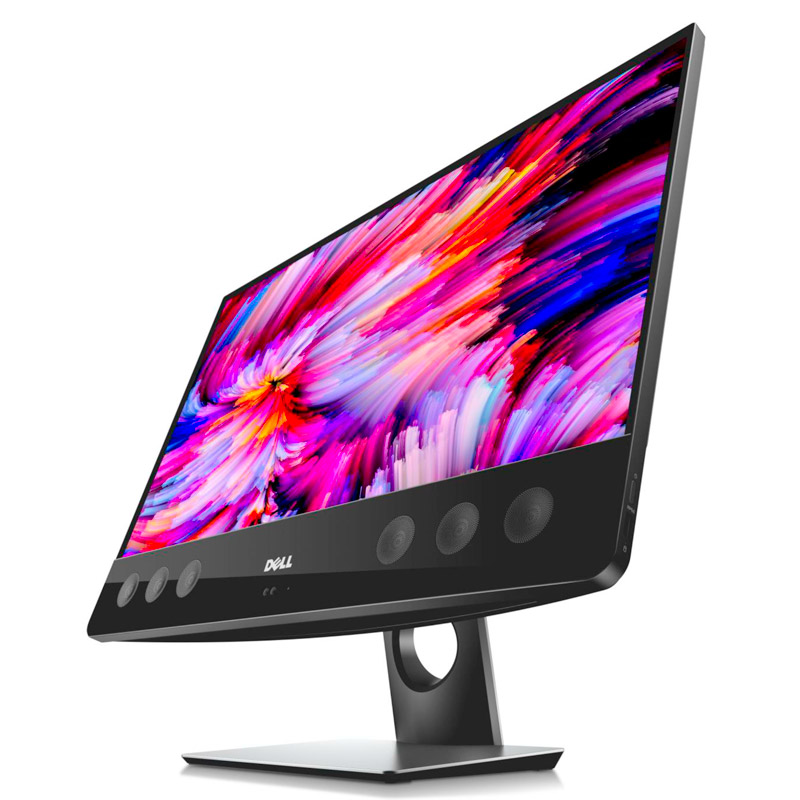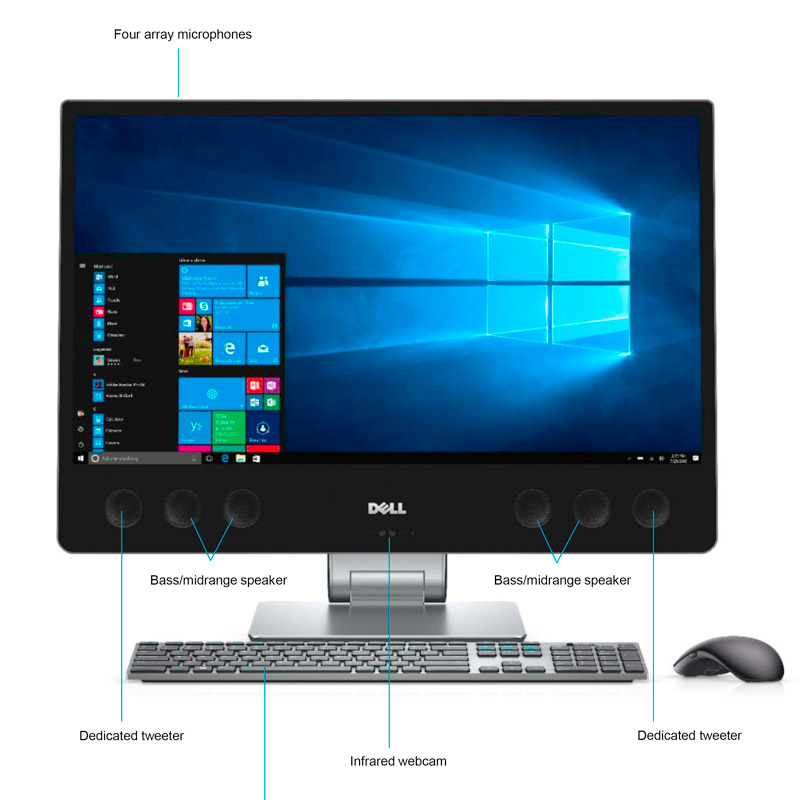About a year ago, I joined the XPS by Dell family when I switched computer systems and returned to a Dell XPS 15 laptop powered by Windows 10. Earlier this year, Dell sent me their new Dell XPS 27 all-in-one for my studio. I’ve had it for about three months, so I wanted to share my setup and review of my new computer system.

My Dell XPS 27 All-in-One Computer Setup
When I first spoke with the team regarding my Dell XPS 27 All-In-One computer, I requested a few upgrades that would speed up my photography and video workflows. Here’s what my system looked like straight out of the box.
- Dell XPS 27 All-In-One with 4k Ultra HD Display
- Touch Enabled Display
- Windows 10 Home
- 512GB PCIe Solid State Drive
- Intel Core i7-7700 Processor
- 64GB DDR4 Ram
- AMD Radeon R9 M470X 4GB Video Card
- Maxx Audio Pro Sound Card
- Dell Premium Wireless Keyboard and Mouse
My Slightly Opinionated Dell XPS 27 All-in-One Review
Although I was happy working on my Dell XPS15 laptop, I wanted a larger display and more powerful computer for my home studio. The Dell XPS 27 All-in-One exceeded my needs and I’ve been impressed with it through the first 3 months of use. Here’s a look at it’s main features and performance.

Awesome Looking Design
The XPS 27 All-in-One computer system was designed to look good in any studio. As you expect from any AIO system, its clean and clutter free but the XPS 27 takes it a with it’s built in sound bar and sleek finish. It’s built to be durable, too, using machined aluminum casing.
27” 4K Ultra HD Touchscreen Display
The display on the XPS 27 is stunning. It’s my first true 4K monitor and I have no idea how I lived without one for so long. Not only is it great for streaming online video – yes, the XPS 27 has become my go-to TV source – but it also allows me to see greater detail while editing video and photos.
Although I have a touch enable display, it’s a feature I rarely use. I just don’t need the fingerprints and smudges on my screen.
Straight out of the box, I had issue with my monitor’s colours. I’d edit a photo and transfer it to another device only to find wildly different colours. After calibrating my monitor with an x-rite i1 Display Pro, the issue was immediately resolved.
No matter how I look at it, it’s the best display I’ve ever worked with.
Wake the Neighbours Sound Quality
Although it’s not a selling feature for my own needs, I’ve discovered the XPS 27 has a killer audio system. Beneath the display is an integrated sound bar with 10 speakers. It’s possible to really blast music and maintain stunning audio quality.
Lightening Fast Performance
The number one reason I wanted the XPS 27 was to have a more powerful machine for editing. Combining 64GB DDR4 ram, an AMD Radeon R9 M470X 4GB video card
and a 512GB SSD does exactly that.
I won’t pretend to be a computer geek. I honestly don’t know how I could officially test this, but I can give some anecdotal experience:
- Import and Export from Adobe Lightroom is noticeably faster. Exports, especially, happen almost instantaneously.
- Video editing in Adobe Premier Pro is faster, too, as I rarely render content to preview it. Even when handling 4K footage, I am not losing time rendering files for preview.
- Running Adobe Lightroom and Photoshop seamlessly. I often leave both programs running and have been editing larger and larger files lately, using a combination of luminosity masks/blends and stitching panoramas. Opening into Photoshop and saving into Lightroom is fast.
While it isn’t based on facts or research, I know these tasks are being done far quicker than my laptop and past OSX-powered machines. All that extra horsepower is doing its job beautifully.
Ports and Slots
If I’m being completely honest, it took me a little while to find the power button when I first setup my Dell XPS 27 All-in-One. It’s small and hidden on the right-hand side of the machine. Immediately beneath the power button, the XPS 27 also has a USB 3.0 powershare port. On the left-hand side, there is an SD Card reader and Audio in port.

The remaining ports – a Thunderbolt 3, 10/100/1000 Ethernet, AC input, Audio out, HDMI out, DisplayPort, and4 USB 3.0 ports – are located on the back of the machine.
These ports are the source of my biggest complaint, as they’re tricky to access. The XPS 27 comes with an articulating stand, but I have mine set close to a wall. To easily access the ports, I either struggle to plug things in blind or I am forced to move the computer out from the wall, articulate the screen flat, and then attempt to plug things in. It’s not ideal.
Final Thoughts on the Dell XPS27 All-in-One Computer
Although it might be slightly biased – Dell did provide my XPS 27 All-in-One – I am blown away by it’s performance and display quality. It outperforms any other computer I’ve owned and speeds up my regular workflow.
I wish I’d had a little extra hard drives space, but it is something I can upgrade on my own. In the meantime, I use two external hard drives to store the bulk of my video and image files. When editing, I transfer the required images onto the built-in SSD drive to speed things up.
All things considered, the Dell XPS 27 All-in-One is a welcome addition to my studio space and I’ll be using it for the foreseeable future.
Check out more of my field reviews on my blog, including my recent experience with the SanDisk Extreme 510 Portable SSD Drive.
Leave a Reply